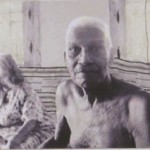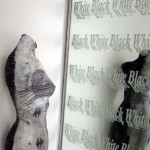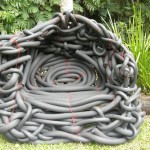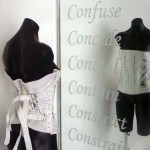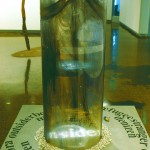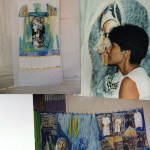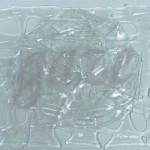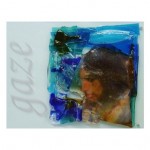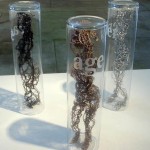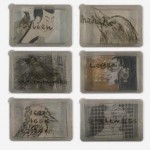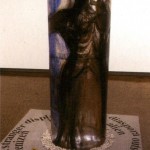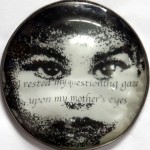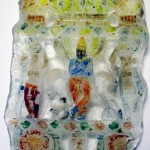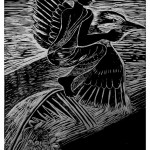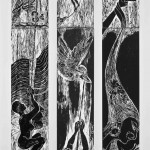International Crosscurrents: Sasi Viktorie
On returning from my recent visit to India with the exhibition “On the Edge” to Jaipur and Delhi, I began reflecting on cultural exchanges and on the artists’ desire to connect to an audience in an international arena.
In my case, the initial desire in my role as the artist/curator was to seek a platform where the work of the artists from Far North Queensland could be shown in a different environment, and to showcase the diversity of the art produced. I recognised that it would be a personal challenge to curate an exhibition and experience working within a completely unknown matrix. I also wanted to introduce indigenous artists to an environment that has historical similarities of post-colonial rule and where heritage is alive and preserved in a contemporary context.
This is following a commitment to show Australian works in India in the initial exhibition, “Corresponding Latitudes” in 2002-2004. This was followed by the work of Jaipur artists in Australia. Upon reflection, I had the same questions lingering in my mind then as I do now, on the value of international exchanges.
What exactly was achieved? Did two countries manage to bridge their cultural gap and understand the works or the culture? Was there any real attempt to extend the relationships beyond showing the works? Did it go beyond reinforcing a stereotypical view held by both countries? Did artists in the project manage to fulfil the intention to reach the Indian audiences on the diversity of art practice in Far North Queensland? Did the indigenous delegates communicate this, or was the experience of encountering India so overwhelming that they experienced a shut down?
There are many impediments in cultural exchange projects, when artists venture into an unknown territory. The works probably only reached a select audience who had the desire to engage with the work and forms part of the art culture in India. In Jaipur, the art students from the Lalit Kala Academy at the Jawahar Kala Kendra encouraged a refreshing dialogue although with limited language. Using English as the common language was fraught with difficulties as Indian English has its own nuances and usage and, at the end of a session, I was not always sure what was really understood.
The publicity machine was a valuable player in getting audiences to the venue but was problematic in transferring correct information. Their relationship with the venue dictated the agenda. The target was not so much the curator’s intent but a broad, positive spin intended to promote the venue and to sell newspapers. No attempt was made by the press to pursue new lines in the limited time devoted to interviews. I was acutely aware that the questioning reinforced existing perceptions. Another glaring problem was the understanding and the meanings that are derived from interviews. It was evident how much of the conversation was misunderstood from reading the final articles. The press releases were full of mistakes about who was showing and the conversations with reporters were often reported out of context.
The only reporter who was an exception was from the “Pioneer”, a Delhi newspaper. Its reporter was perceptive enough to understand that this exhibition was distinctly different in the portrayal of confidence in the artworks of the Torres Strait Islander people. She asked me a question that said more on the stereotypical image in India of the Australia Indigenous people, as being victims of the history of white colonialism. It created an opening to then clarify and inform on the pride that exists in communities and the way artists are able to promote their own people and their culture. It was possible to also clarify that there is no one Australian indigenous people and that they are as diverse as India’s indigenous people. There was a problem, though with the timing of the publishing of this article. It was too late to influence an audience to attend the exhibition at the Indira Gandhi National Art Centre.
The idea of what is deemed contemporary in India was puzzling at first. Definitions change from one country to another based on its art history. This I began to understand upon my visit to the Museum of Modern Art, New Delhi where the chronology was more evident to an outsider. On reflection, it would have been more relevant to engage with India’s indigenous artists and connect with their artwork. An ideal partner would be a curator from India who is well acquainted with the project rationale and the Indian indigenous art culture. The artists chosen for our project were based on relationship rather than a curatorial framework and this became problematic. Moreover, as a guest in a country, it is undiplomatic to challenge these issues for fear of offending one’s hosts. While the position of curator calls for flexibility, this environment can also compromise the project rationale. It is essential to maintain relationships, to safeguard future exchanges and ongoing art discourse.
How do you gauge the outcomes of a project like this? In terms of sales, perhaps, the project was not that successful. The choice of venues where the exhibitions were held, I later understood was important. A curator across on the other side of the globe cannot anticipate how these organisations are run. Both venues where “On the Edge” was held did not have a focus on marketing or sales as they are government run enterprises. Perhaps the hope that art dealers would arrive by chance and purchase artworks relies on prior knowledge and the relationship. The downturn in the present economy and the lack of engagement with foreign works may have a significant impact. Our exhibition sales were based on a cohort (the staff from the High Commission), familiar with the value of the works and the artists who were in the exhibition.
The most significant value I can place on the experience is the generosity of spirit and hospitality that was shown to us. The duty of care endowed by our hosts, literature festival organisers, auto rickshaw drivers, taxi drivers, people on the street and the friends, artists and new acquaintances. This will remain as a memorable reminder of the immense humanity in India.
The artworks received a positive response and, at times, the audience ventured beyond polite exchanges to a platform where discussion could take place. In Delhi, this opportunity was dampened by the lack of enthusiasm by the host venue to publicise the exhibition. It was an afterthought that wasted an opportunity for the artists and the organisation. The planned forum with INTACH was cancelled by their administration as it had the same lack of enthusiasm. The mechanisms that drove the project were not forthcoming and all the intent behind the project could not be realised by the curator whose original intent was engagement with the Indian public. It is unfortunate that circumstances that develop later had eroded the potency of the project after enormous effort, research, and funds are devoted to a project.
My own works had recognisable Indian elements. It was sometimes helpful to break new ground in communicating with the press and at other times it was a problematic difference that stood out. As an Australian curator in the form of a migrant Malaysian-Indian Diaspora, I encountered discomfort that uncovered the inability to see beyond racial origins. I was aware of it and found it amusing that stereotyping lives beyond cultural boundaries.
In terms of renewed connections, this opportunity for ongoing dialogue to reflect on the project is a good outcome. The success of this project as a cultural exchange will probably remain to be gauged after a passage of time or when another curator or organisation willingly coordinates another instalment. I would like to have a residency that would allow a greater understanding where bureaucracy, time and financial restrictions do not impede the progress of more creative engagements. I must thank the Australia India Council for their support and foresight to back such experimentation and I await another opportunity to keep this dialogue between India and Australia alive.
